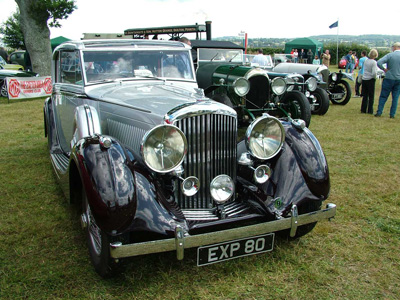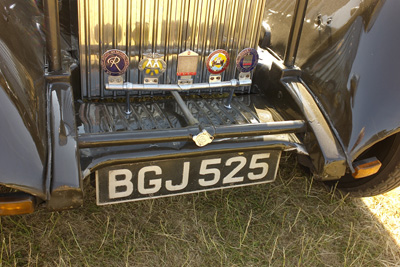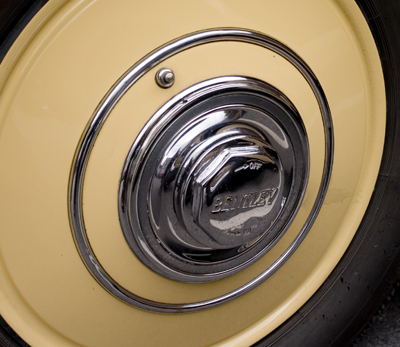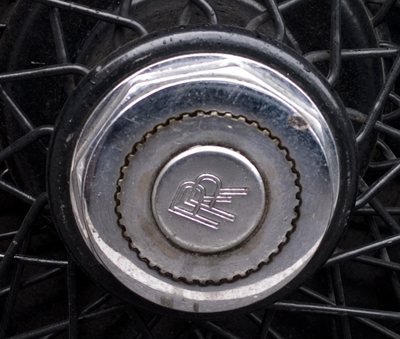
| Vintage | | | Derby | | | Post-war | | | Crewe monocoque | | | Crewe modern | | | Specials |
The common factor in the ethos of Bentley and Rolls Royce was reliability, achieved by high quality of design and manufacture. They diverged with respect to purpose: Bentley was driven by a desire to win races; Royce was more interested in selling cars to the rich and famous. He acquired Bentley Motors primarily to kill off the 8 litre, which he saw as serious competition for his Phantom II. He also saw an opportunity to add a range of sports cars to his porfolio and the reputation of Bentley for quality of design and manufacture meshed with RR's.
Accordingly, the Derby Bentleys were marketed as "The Silent Sports Car", presumably to appeal to the sons and daughters of the rich and famous who might themselves be chauffeured around in RR Phantoms.
Many of the surviving Derby Bentleys still have either their original coachwork or new or refurbished bodies in keeping with 1930s motor cars. So if you see a Bentley with closed coachwork, a chrome-vaned radiator and a beam axle at the front, it is quite likely to be a Derby car. A glance at the wheel hub will serve to confirm the identification (see picture below).
Rolls Royce still supplied rolling chassis to coachbuilders of the owners' choice or to dealerships prepared to have bodies made for immediate sale to customers. About half of the Derby cars had their first bodies from Park Ward.
Three models were made in succession: a 3½ litre, a 4¼ litre (enlarged from the 3½) and a Mark V, of which only a handful was made because of the intervention of the second World War. The 3½ engine was a development of the Rolls Royce 20/25 engine; the 4¼ was an enlarged version of the 3½. The Mark V was a completely new car, with a redesigned 4¼ engine amongst other new developments.

The centre-locking wheel nuts of the Derby cars are a Rolls Royce (octagonal) design and serve to distinguish Derbys from W O cars, which had eared spinners and small octagonal dust caps. Radiator shells are chromed and vaned, the vanes being connected to a thermostatic device that opens them as the coolant's temperature increases. Both 3½ and 4¼ cars have a beam axles at the front, which can be discerned in this photograph.








There is little point in displaying more pictures here, as the distinguishing features of the Derby cars are evident from the above and much better galleries than mine exist elsewhere on the web.
These web sites have photographs of a wide variety of Derby Bentleys:
July 2013